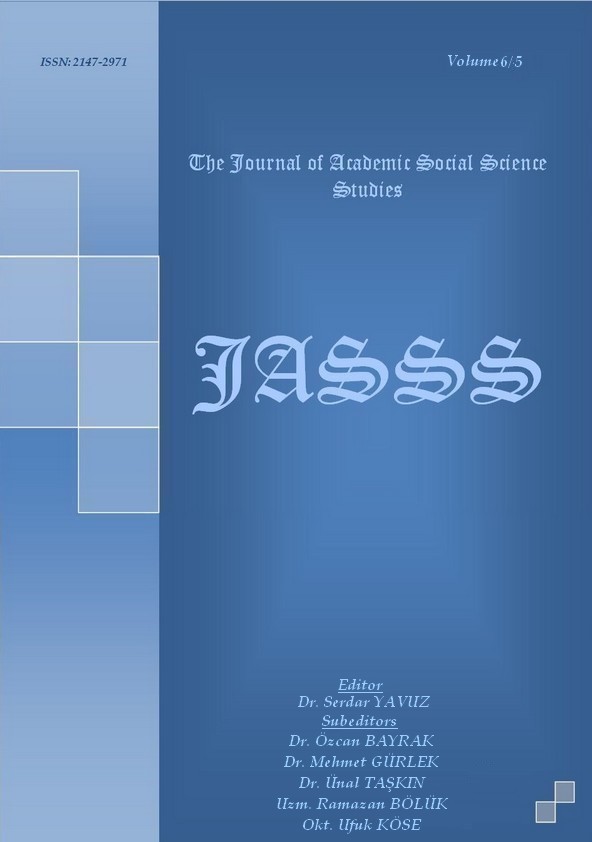BİLGİSAYAR DESTEKLİ ÖĞRETİMİN 6.SINIF ÖĞRENCİLERİNİN MADDENİN TANECİKLİ YAPISI KONUSUNU ANLAMALARINA ETKİSİNİN İNCELENMESİ VE KAVRAM YANILGILARININ TESPİTİ
Author :
Abstract
Bu çalışmada, bilgisayar destekli öğretim materyalinin maddenin tanecikli yapısı konusunda 6.sınıf öğrencilerinin başarı düzeylerine etkisi ve kavram yanılgıları araştırılmıştır. Aynı fen ve teknoloji öğretmeninin Çanakkale Anafartalar ilköğretim okulunda eğitim verdiği 47 altıncı sınıf öğrencisi çalışmaya katılmıştır. Sınıflar içerisinden iki grup rastgele seçilmiş ve geleneksel öğretim metodu ile öğrenim gören öğrenciler kontrol grubu, bilgisayar destekli öğretim yöntemi ile öğrenim gören öğrenciler deney grubu, olarak belirlenmiştir. Araştırmada öğrencilerin maddenin tanecikli yapısı konusunu anlama seviyelerini belirlemek amacı ile maddenin tanecikli yapısı ile ilgili çoktan seçmeli sorular içeren “Bilimsel Başarı Testi” her iki gruba ön test ve son test olarak uygulanmıştır. Test, çoktan seçmeli 15 sorudan oluşmuştur. Elde edilen veriler bilgisayar ortamında SPSS 11.0 paket programı kullanılarak değerlendirilmiştir. Verilerin değerlendirilmesinde t testi analiz yöntemi kullanılmıştır. Araştırma sonucunda bilgisayar destekli öğretim metodu ile öğrenim gören öğrencilerin, geleneksel öğretim metodu ile öğrenim gören öğrencilere göre daha başarılı olduğu saptanmıştır. Ayrıca, kontrol grubunda bulunan öğrencilerin deney grubunda bulunan öğrencilere göre daha fazla kavram yanılgısına sahip oldukları görülmüştür. Sonuç olarak, bilgisayar destekli öğretim yönteminin kullanımının öğrencilerin sahip oldukları yanılgıların giderilmesinde yardımcı olduğu tespit edilmiştir. Çalışmada elde edilen kavram yanılgıları incelendiğinde; kütle, hacim, sıkışabilme özelliği, akıcı olma gibi makroskobik özellikler ile ilgili maddenin tanecikli yapısı konusunda öğrencilerin kavram yanılgıları olduğu belirlenmiştir. Bunun yanı sıra katı, sıvı ve gazlar için taneciklerin hareketi, hızları, büyüklükleri, tanecikler arası uzaklık gibi mikroskobik boyutta da kavram yanılgıları olduğu tespit edilmiştir.
Keywords
Abstract
In this study, the effects of a computer-based instruction material on the sixth grade students’ success level and students’ misconceptions in the nature of matter were examined. 47 sixth grade students from two classes instructed by the same teacher from Anafartalar Elementary School in Çanakkale took part in the study. Two groups which were selected randomly and one of group was defined as control group in which students taught by traditionally designed science instruction, while other group defined as experimental group in which students were instructed by computer based instruction. Scientific Success Test which was related to nature of the matter was administered to both groups as a pre-test and post-test to asses the students understanding of nature of the matter. The test was consisted of 15 multiple choice items. Collected data's were evaluated by using SPSS 11.0 program. While evaluating data's t-test was used. At the end of the research it was found that the students who were taught computer based instruction were more successful than the students who were taught by traditional designed instruction. Also, it is found that students in control group have more misconceptions than the students in the experimental group. As a result, it was determined that the use of computer based instruction method helps to overcome the students’ misconceptions. When the misconceptions investigated in the study, it was found that the students have misconceptions in nature of matter at macroscopic properties which were like substances’ mass and volume, properties of squash and being fluid. On the other hand, it was determined that the students have misconceptions at microscopic properties which were like motion of the particles, movement of the particles, size of the particles, space between particles for the solids, liquids and gases.





